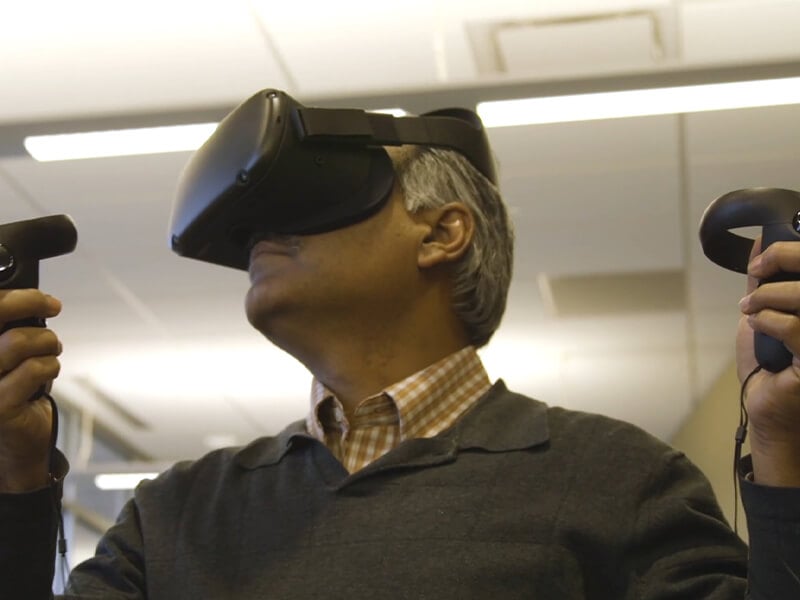Experiential marketing at trade shows using VR highlights the type of data intensive application supported by Vertiv’s infrastructure solutions
As Architects of Continuity that build future-ready infrastructure for thousands of data center customers around the globe, Vertiv knows one thing for sure — if you’re not on the edge, you soon will be.
Of course, we aren’t referring to the popular adage that describes your dangerous lifestyle, but we are talking about having compute and storage infrastructure at the edge of your network to more effectively meet the needs of your business.
According to recent survey responses from nearly 500 data center professionals contributing to Vertiv’s Data Center 2025: Closer to the Edge report, more than half (53 percent) with edge sites today, or those who expect to have edge sites in 2025, anticipate the number of edge sites they support to grow by at least 100 percent. Twenty percent of respondents expect an increase of 400 percent or more.
Companies are clearly making hybrid architectures that embrace edge computing more mainstream, so they can capitalize on the four edge archetypes that are driving this massive growth. One of those archetypes is defined as data intensive. These are the use cases, like virtual reality (VR), in which the sheer amount of data, cost, or bandwidth make it impractical to transfer over the network directly to the cloud or from the cloud to the point of use.
Vertiv understands this particular use case quite well as it has utilized VR at events to let its customers explore and design digital continuity solutions in 3D and then share those designs with their colleagues via smartphone.
Working with Axonom, a global provider of visual and virtual product configurator software, Vertiv adopted Powertrak Virtual Reality as an interactive teaching tool to give prospective buyers, who are either novice or seasoned experts of Vertiv products, a way to fully understand the entire layout of an edge solution.
Vertiv uses virtual reality to transport trade show attendees to an edge solution located in a facility, near a cell-tower, school, or other remote location. Users wear a headset and use hand controllers to navigate the environment, interact with equipment, and watch animations that demonstrate a product’s value and key concepts.
This experience gives decision-makers a deeper understanding of the entire infrastructure at work. Users can navigate the environment and observe the spatial placement of Vertiv's rack and row solutions as though they are actually on site. They can customize a Vertiv VR rack by placing servers, power, cooling, and storage devices into the unit. Animations are shown to demonstrate how to maximize space and efficiencies within Vertiv products.
Like Vertiv, manufacturers leverage VR to connect, educate, and leave an impactful impression with the target audience. But marketing leaders value its return on investment (ROI) benefits. VR is portable and an economically friendly way to present large or many products. It helps to eliminate or reduce shipping display models, which saves on expensive shipping, storage and drayage fees.
For businesses that sell customizable products in various environments, offering an interactive and immersive experience creates curiosity, showcases an array of products in various settings, leads to deeper conversations, influences how decision-makers view your business (innovative and customer-focused), and delivers a memorable experience.
Together, Axonom’s Powertrak Virtual Reality and Powertrak 3D Product Configurator is a compelling platform that’s reshaping how consumers learn, validate, and order configurable products in configurable environments. Visit Vertiv at these upcoming shows to experience Powertrak Virtual Reality first hand and learn more about how Vertiv supports IT ecosystems from core to edge.
|
Data Center Dynamics Events |
||
|
March 31-April 1 |
June 15-16 |
October 5-6 |





